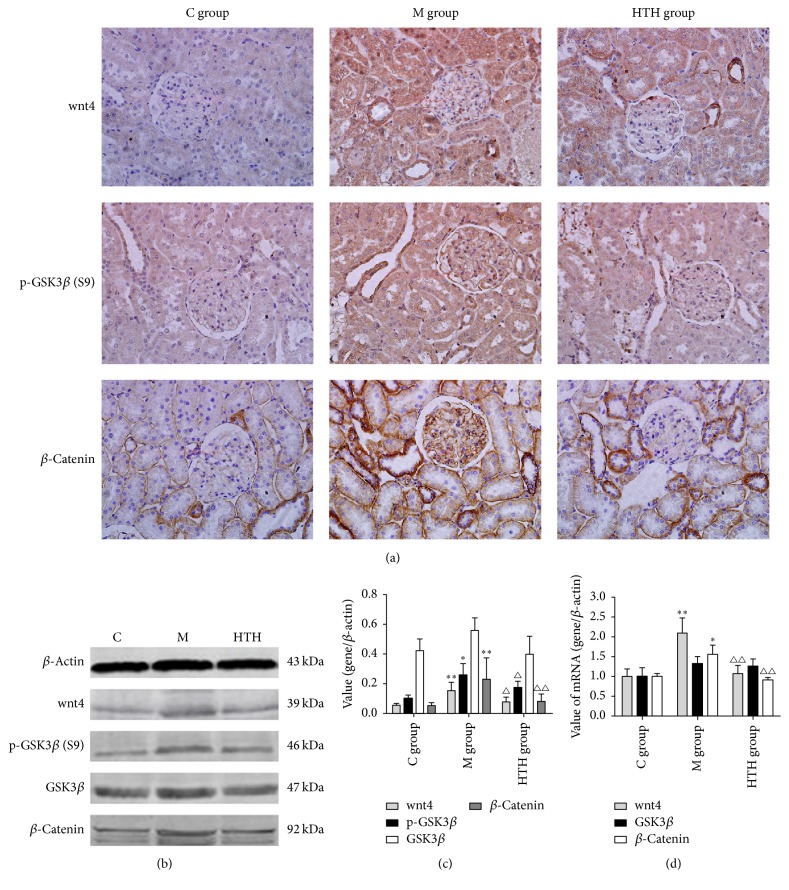Figure 2.
Effects of HTH on the Wnt/β-catenin signaling pathway of rats. Immunohistochemical staining for Wnt4, phospho-GSK3β (S9), and β-catenin in renal cortex of normal control rat group (C group), diabetic model rat group (M group), and Huayu Tongluo herbs treatment rat group (HTH group), exposed to DM and then administration of Chinese medicine of stasis removing and collaterals dredging herbal granule suspension intragastrically (a). Protein levels of Wnt4, phospho-GSK3β (S9), GSK3β, and β-catenin were determined by Western blot and quantified by densitometry in renal cortex of three groups ((b), (c)). Real-time PCR of Wnt4, GSK3β, and β-catenin mRNA with an internal control of β-actin in three groups (d). Values are expressed as means ± SD. Compared with C group, ∗P < 0.05, ∗∗P < 0.01; compared with M group, △P < 0.05, △△P < 0.01.

